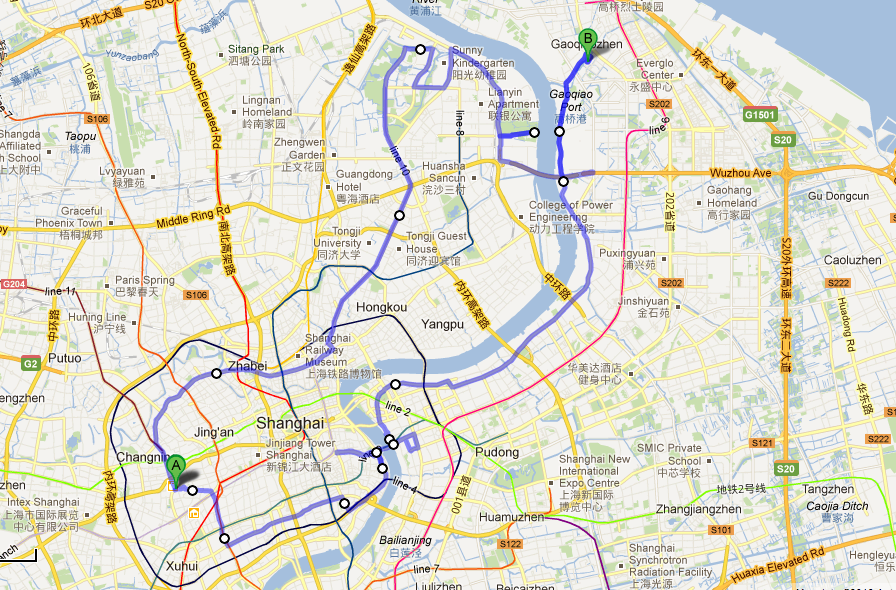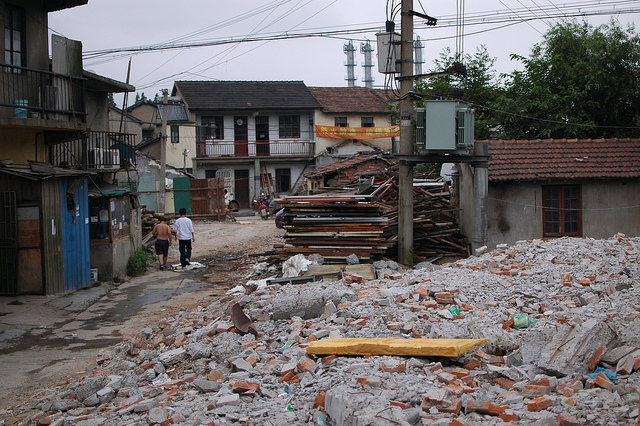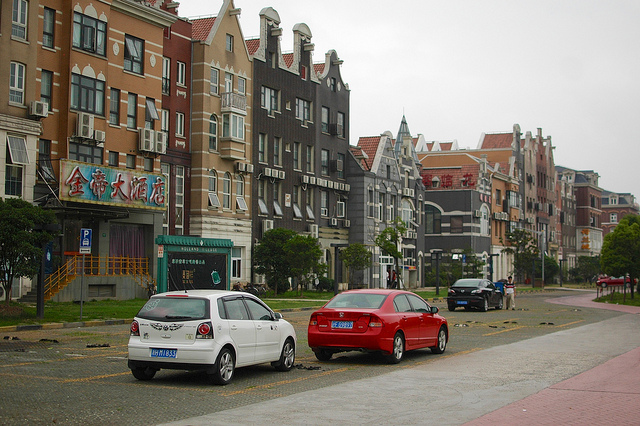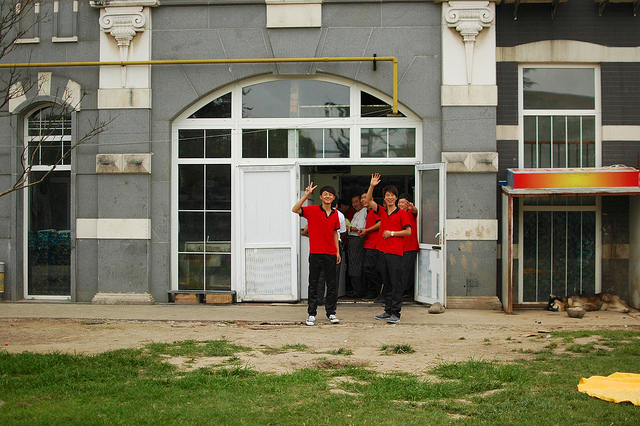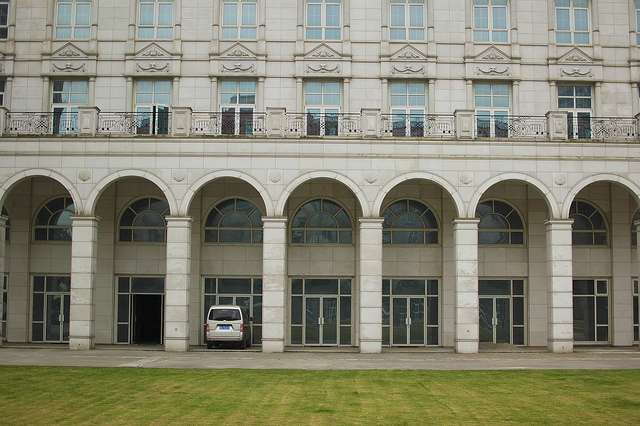Shanghai is full of anti-tourism. From the Jing'an Sculpture Park to the insect market there's something for everyone. Nothing, however, comes close to the 'one city nine towns' initiative that has resulted in such urban planning abominations as Italy town, Thames Town and the Scandinavian Lake Malaren.
Holland Town has been on the agenda for a couple of years now, and finally, on an almost bright and hazy day, we took a roll to the city limits and explored the impossible. Could this be an authentic, thriving, dutch-themed community perched on the mouth of the Huangpu River? Of course not. It's terrible.
Getting to 'Creativity Holland', just outside of Gaoqiaozhen, is no walk in the park. It rests on the north side of the wrong side of the river, some 20km outside of Shanghai. Nearby are a bunch of factories, abundant locals dancing around open fires and the godawful #6 Metro line at Hangjin Rd Station. Here's a route to ride (there are two ferries to take which are clear on the route, ignore the part where it winds onto a car-route).
If you're rolling there: Cross the river in the way you know best and cruise east along Pudong Avenue past the vast expanses of construction. Head under the lesser-spotted Yangpu Bridge and roll up through CSSR territory. Here is the largest container shipyard in the world and possibly responsible for the paint-stripper aroma in the air. If this were Russia, kids would be licking the lamp posts.
Sometime after you're bearing dead north, around DongJing Lu, there's a leafy local road. Take this through a neighbourhood of rubble and garbage and blankly staring locals. It doesn't take long before Shanghai basically sinks into nothingness. If the wind, traffic and piles of broken glass are in equinox then it will make for a mostly pleasant roll.
Just before the huge factories (almost immediately before the small factories) begin the modern, gabled low-rise complexes that mark a departure from reality.
This is Holland Town. You can tell it's Holland Town because of the windmill. There's also a rusty sign that says so. Other non-conclusive hints include a vaguely european-facaded high street and a church spire. The whole affair, like the others, is poorly maintained and mostly abandoned. It's like the aftermath of a zombie apocalypse movie, where the only survivors were a few Chinese mainlanders who have spent the last couple years squatting in an Amsterdam street-scene film set, slowly transforming it to fit their lives.
Picture that for a minute. Now you don't need to go.
"But there's a windmill!" you're also thinking. It's rubbish. You'll go across a rusting bridge over a brown canal to a wedding-photograph-infested park which has an out-of-service windmill slowly, visibly falling to pieces. it used to be a museum, or a cafe, or something. It's nothing anymore.
There is fully nothing to do. We tried to sit on the grass but the sleeping guard was onto us in seconds. The church is a shell. The chinese restaurant is done for and there's so much spittle on the streets that you'll skate across the high-street and land on someone's badly shaved poodle. It will take 10 minutes to do all this, including time to wave at the locals.
It was entirely worth the trip though. This is China anti-tourism at it's very, very best. Please go there. We made our excuses and left, closing the door on the way out. Just south, along the river is a ferry crossing to relative normality in Puxi, and, if you've not had enough anti-tourism for the day, the Gongqing Forest Park.
